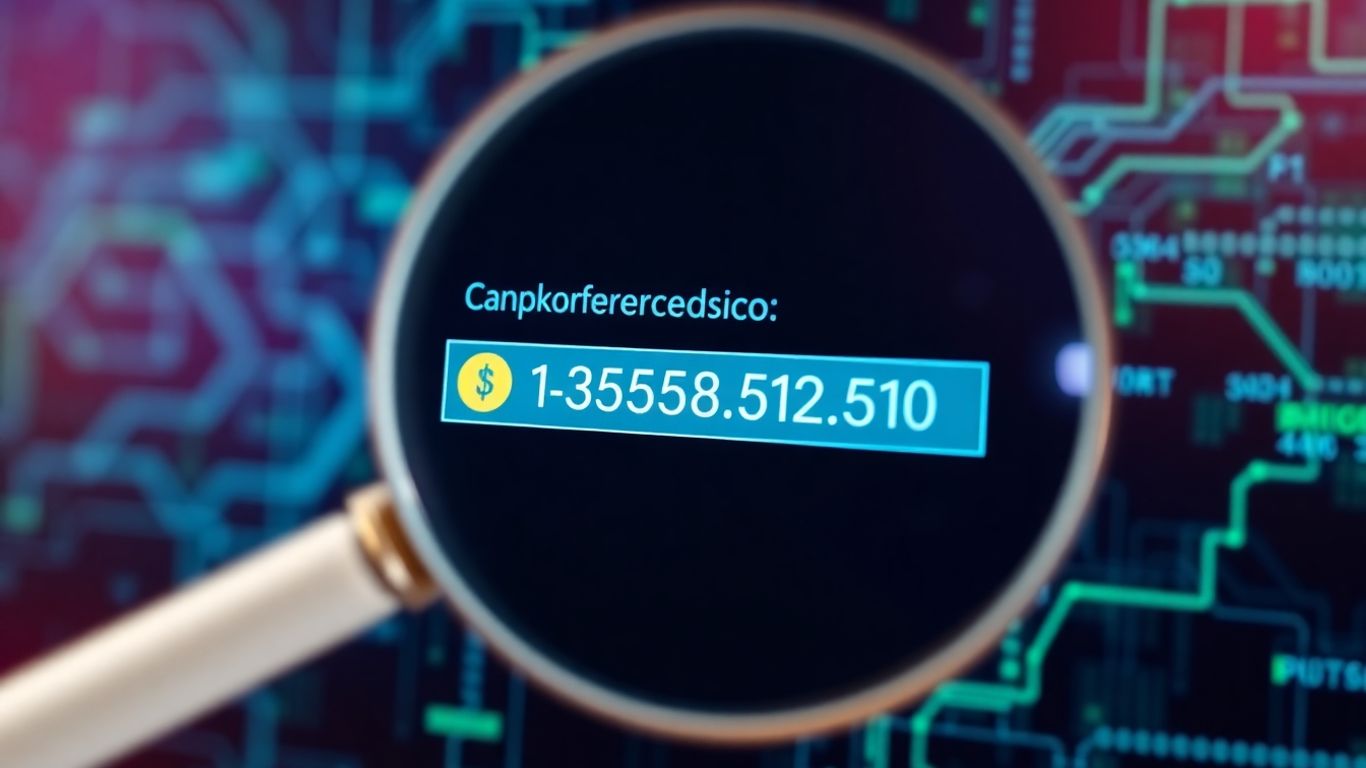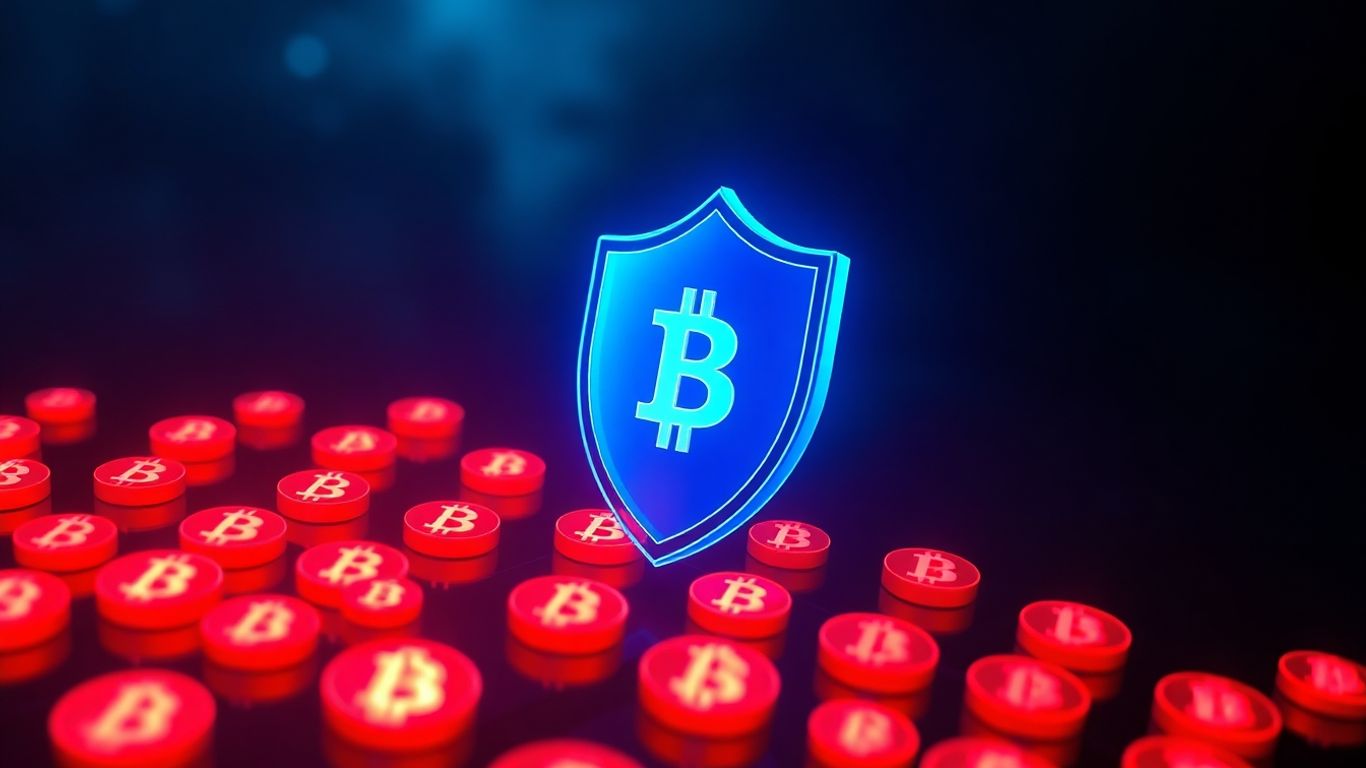[ newsletter ]
Stay ahead of Web3 threats—subscribe to our newsletter for the latest in blockchain security insights and updates.
Thank you! Your submission has been received!
Oops! Something went wrong. Please try again.
Use our crypto scam report tool to submit and track your case. Learn about crypto scam trends, reporting procedures, and advanced security measures.





Losing money to a crypto scam is a really awful experience. It feels like there's not much you can do once it happens. But actually, there are steps you can take to report it and maybe even get some of your funds back. This is where a scam report tool crypto users can access becomes super important. It's not just about reporting what happened to you, but also about helping others avoid the same fate.
It feels like every other day there's a new headline about crypto scams. It can be a bit overwhelming, right? While the overall amount of money lost to scams might be showing a downward trend compared to previous years, that doesn't mean the threats have disappeared. Far from it. Scammers are just getting smarter and finding new ways to trick people.
Reports from 2024 indicated a drop in the total funds sent to fraudulent activities, a welcome sign after some rough years. For instance, funds sent to Ponzi and "pig butchering" schemes saw a significant decrease. However, it's important to remember that these numbers are often lower-bound estimates. As more instances are discovered over time, these figures tend to increase. So, while the reported numbers might be down, the threat is still very much alive. Thousands of new scam websites pop up every month, and platforms that track illicit crypto activity are still flooded with reports.
The crypto world is always changing, and so are the scams. We're seeing new tactics emerge, often tied to the growth of different parts of the crypto ecosystem. For example, scams involving cross-chain bridges and even artificial intelligence are becoming more common. Scammers are also getting more organized, sometimes operating like professional businesses that offer a range of illicit services, from the tech needed to start scams to money laundering. This professionalization makes them harder to track and dismantle. It's a constant cat-and-mouse game, and staying informed is key.
Even with the overall decline, certain types of scams continue to rake in serious cash. High-yield investment scams (HYIS) and the notorious "pig butchering" scams are still among the biggest revenue generators. While the total money lost to these might have decreased, the number of deposits into pig butchering scams has actually gone up significantly. This could mean scammers are targeting more people but perhaps with smaller amounts each time, or they're spending less time building trust before asking for money. These scams often start with a seemingly innocent connection, like a romance scam, and then lead victims down a path of fake investments.
Scammers are constantly adapting, using new technologies and exploiting the growing complexity of the crypto space. What worked last year might not work this year, and vice versa. Staying aware of the latest trends is your first line of defense.
Here's a look at some common scam types:
It's a lot to keep track of, but understanding these trends is the first step toward protecting yourself. If you've been targeted, reporting it is super important, and there are tools that can help with that. You can find more information on how to report scams at Chainabuse.

So, you've unfortunately run into a crypto scam. It happens, and honestly, it's a really frustrating experience. But here's the thing: reporting it isn't just about trying to get your money back, though that's obviously a big part of it. It's also about helping to build a safer space for everyone else. Think of it like leaving a review for a bad restaurant – it warns others and might even push the place to get its act together.
Reporting a scam can actually increase your chances of recovering lost funds. The sooner you act, the better the odds that authorities or platforms can trace the money and potentially freeze or recover it. It's not a guarantee, but it's a much better shot than just letting it go.
When you report a scam, you're doing more than just filing a complaint. You're contributing to a larger effort to track down bad actors and prevent future victims. It's a way to fight back against these schemes.
Using a dedicated tool or platform to report scams can make the process smoother and more effective. These tools often guide you on what information is needed, making your report more actionable.
A well-documented report is key. It's not just about saying you were scammed; it's about providing the evidence that proves it. This includes transaction IDs, wallet addresses, communication logs, and any other digital breadcrumbs left behind.
Here’s a look at where reports can make a difference:
Reporting isn't just reactive; it can be proactive too. By sharing your experience, you contribute to a collective defense.
Okay, so you've been hit by a crypto scam. It's a rotten feeling, I know. But don't just sit there stewing in it. The first real step toward potentially getting anything back, or at least stopping these guys from scamming someone else, is to actually report it. It might seem like a long shot, but it's way better than doing nothing.
Before you start filling out forms, you need to get your ducks in a row. Think of yourself as a detective. The more details you have, the better your case will be. Seriously, don't skip this part; it's super important.
Here's what you should try to collect:
So, you've got your evidence. Now, where does it go? It's not just one place, unfortunately. You'll likely need to report it in a few different spots to cover your bases.
Reporting a scam isn't just about trying to get your own money back. It's about contributing to a safer crypto space for everyone. Every report helps authorities and platforms understand scammer tactics, track down criminals, and hopefully prevent future victims from suffering the same fate. It's a collective effort.
Think of your evidence as the fuel for your report. Without good evidence, your report might not go very far. It's not just about having screenshots; it's about having the right screenshots and details.
Remember, the more organized and detailed your evidence is, the more seriously your report is likely to be taken. It makes it easier for investigators to follow the money and build a case.
So, you've gone through the tough process of reporting a crypto scam. What happens next? It's not always a clear path, and sometimes it feels like shouting into the void. But there are ways to keep tabs on your report and understand what's happening, even if it's slow going.
These companies are like digital detectives for the crypto world. They use fancy tools to follow the money trail on the blockchain. When you report a scam, especially if you have transaction details like wallet addresses and transaction IDs (TXIDs), these firms can sometimes trace where the stolen funds went. They don't usually work directly with individual victims, but law enforcement agencies often partner with them. Think of them as the forensic accountants of the crypto space. They can identify patterns and flag suspicious activity, which is super helpful for investigations.
Reporting to law enforcement, like the FTC, FBI (through IC3), or your local police, is a big step. It can feel frustrating because these agencies are often swamped, and crypto cases can be complex. The best approach is to be persistent but patient. Keep a record of your report number and any case ID you receive. If you have new information or evidence, submit it promptly. Some agencies have online portals where you can check the status of your report, but often, you might need to follow up via email or phone. Remember, they are dealing with a lot, and sometimes these investigations take a very long time, or unfortunately, don't lead to recovery.
Beyond official channels, the crypto community itself can be a resource. Websites and forums dedicated to tracking scams, like Chainabuse, allow users to report and share their experiences. While these platforms don't have the power of law enforcement, they serve a vital purpose: warning others and sometimes pooling information. If a scam is widespread, you might find discussions about it on platforms like Reddit or specialized crypto forums. Sharing your experience, even if it doesn't directly lead to recovery, helps build a collective awareness and can prevent others from falling victim. It's also a place where you might find others who have had similar experiences and can offer advice or support, though always be cautious of new scams trying to exploit victims seeking help.

Artificial intelligence is becoming a big deal in keeping crypto safe. Think of it like a super-smart detective that can sift through tons of data way faster than any human. It's getting really good at spotting weird patterns that might mean a scam is happening, even before it fully unfolds. This tech can look at transaction histories, website behaviors, and even social media chatter to flag suspicious activity. For example, some systems can automatically check if a new token looks like a scam or if a website is trying to trick you into giving up your private keys. It's all about getting ahead of the bad guys.
The sheer volume of crypto transactions makes manual oversight impossible. AI offers a scalable solution to analyze this data, identifying anomalies that might otherwise go unnoticed. It's not just about reacting to scams; it's about building systems that can anticipate and block them.
Blockchain analysis tools are pretty neat. Because most blockchains are public ledgers, every transaction is recorded and can be traced. Specialized firms use sophisticated software to follow the money trail, even across different blockchains. They can link wallets to known scam operations, exchanges, or even illicit activities. This helps law enforcement and security teams identify who is behind the scams and where the stolen funds are going. It's like putting together a puzzle, piece by piece, using the public record.
When you're dealing with crypto, the code that runs things, like smart contracts, needs to be solid. Flaws in these contracts can be exploited by scammers. Tools are now available that can automatically scan smart contracts for common vulnerabilities, like bugs that could let someone drain funds or manipulate the contract's logic. It's like getting a security check-up for the code before you interact with it. For your own wallet, there are also services that can give you a risk score based on its history, showing if it's been linked to any shady dealings. This helps you make smarter choices about where you put your crypto.
Navigating the crypto world can be exciting, but it's also a place where scammers try to trick people out of their digital money. Staying safe means being aware and taking smart steps. Don't let the fear of scams stop you from exploring crypto, but always keep your guard up.
Scammers often use similar tricks. Spotting these signs early can save you a lot of trouble.
Making sure your transactions are safe is key to protecting your assets. It's not just about the tech; it's about how you use it.
Beyond transactions, keeping your actual crypto holdings safe requires a proactive approach to security.
The digital nature of cryptocurrency means that once funds are sent to a scammer, recovery is extremely difficult, often impossible. This makes prevention the most effective strategy. By adopting a mindset of healthy skepticism and diligently applying security best practices, you significantly reduce your risk of becoming a victim.
So, we've talked about how to report crypto scams and keep an eye on things. It’s a bit of a wild west out there sometimes, and unfortunately, scams are still a big problem, even if the numbers are going down a little. Tools like the one we’ve discussed can really help, both for reporting what happened to you and for checking out a new project before you put your money in. Remember, staying aware and reporting suspicious activity is key to making the crypto space safer for everyone. Don't be afraid to use these tools and spread the word.
A crypto scam report tool is like a special online form or website where you can tell people about a scam you experienced with cryptocurrency. It helps gather information about the scam so others can be warned and maybe even help track down the scammers.
Reporting scams is super important! It helps warn other people so they don't get tricked. It also gives important clues to law enforcement and security companies, which can help them catch the bad guys and maybe even get some money back for victims.
When you report a scam, try to include as much detail as you can. This means things like dates, amounts of money involved, any website addresses or names of people involved, and any messages or emails you exchanged with the scammer. Screenshots are also really helpful!
Getting your crypto back isn't guaranteed, but reporting the scam definitely increases your chances. The sooner you report it, the better. Law enforcement and security experts can use the information to try and trace the stolen funds.
Tracking your report depends on where you submitted it. Some platforms might give you a case number to check on, while others might involve following up with law enforcement. Sometimes, community forums also discuss ongoing scam investigations.
Watch out for fake investment opportunities that promise super high returns really fast (like 'pig butchering' scams), phishing attempts where scammers try to trick you into giving up your passwords, and fake giveaways or airdrops. Always be skeptical of offers that seem too good to be true!


